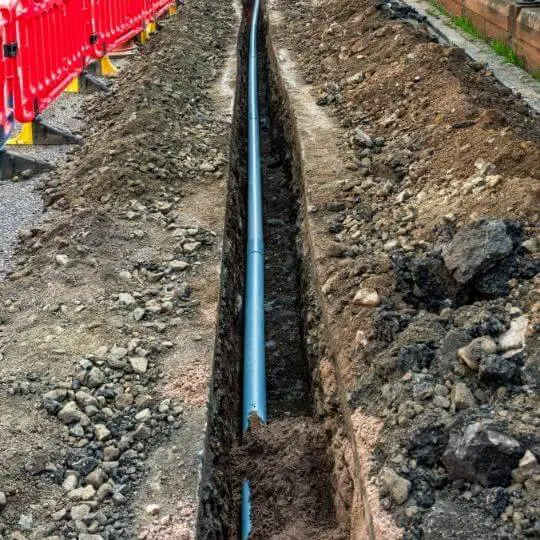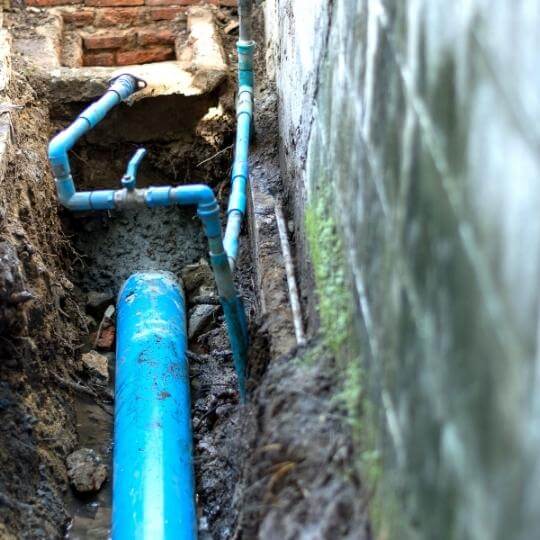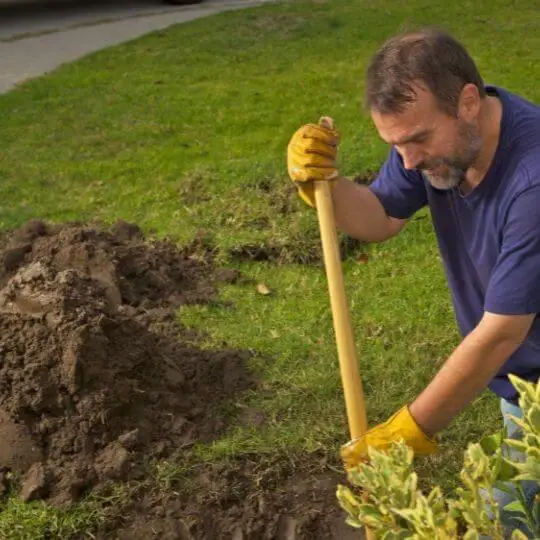Do you know how to locate water lines in yard? Maybe you don’t know how to use pipe locator? We may help you.
Not many people know where the water lines are located on their property or just have an idea of where they could be located. And, even if they do know where they are located approximately, remembering the exact depth at which water lines are located is way trickier (especially when knowing some water lines are located 2, 3, or more feet below ground).
Sometimes, water lines can be located inside walls or near electrical panels, and trying to get to the water line can get you to the wrong place.Other times, puddles, grass, and debris can make locating water pipes difficult.
In case you’ve been thinking about any excavating or digging projects, you’d better locate your water lines precisely, otherwise – you may damage the pipes and cause major damage.
In short – locating them is essential, and, because of that, we are going to help you learn how to locate water lines in yard.
Really, Why Do I Need to Track Water Pipes Underneath Ground?

If you live in a city, then the water line goes straight from the street to your house, and vice versa, and this way, your piping system is connected to the local water system. On the other hand, if you live out of the city, in a rural area, water pipes are connecting your home to a well.
If you don’t know where the pipes are accidentally dig into them, you’ll cause almost irreversible damage. Digging through your water line will probably cause a major leakage into your basement, and maybe even flood your entire house.
The worst thing is – you won’t even realize you have damaged the pipes all until this starts happening. Plus, damaging your water lines can cost you hundreds or even thousands of dollars. Your home’s foundation can absorb excess moisture [1], cause further damage to interior materials and walls, and cause rot and mold, making the place not safe to live in anymore.
How to Locate Private Water Lines? Top 4 Methods

No matter whether you need to find metal or plastic water lines, a utility line locator can help. When aimed at different points on the ground, a utility line locator will provide audio or visual signs that you are standing above a water line. You should mark the whole path of water lines leading to your house, otherwise, there’s still a chance you’ll damage them while performing the digging.
You can use a utility line locator or similar devices in several ways to find water lines in yard, and we’ve listed the most popular methods below:
- Acoustic Method
The acoustic method is the most popular because it has been around for decades, although some people doubt its accuracy. Basically, all you have to do is take a branch or rod and hold it parallel to the ground. If the branch/rod makes a movement, it could be a sign your water lines are located right below.
However, using this method, you won’t be able to find out at which depth they are located. Alternatively, you can use an acoustic pipe locator to locate the exact position of water lines in your yard, and this is certainly a more trustworthy method.
- GPR Method
The GPR or ground penetrating radar method is way more effective than the acoustic method, plus it makes it easy to locate both metallic and non-metallic (PVC) pipes. However, as it requires removing the hydrant’s cap and pressurizing it in order to detect a leak, it takes slightly more time and effort.
- Electromagnetic Conductivity Method
Electromagnetic conductivity is among the most expensive methods, yet most reliable methods, of finding underground electric lines and metallic pipes. However, it can’t detect underground PVC pipes.
- Radio Frequencies Method
You can easily trace water pipes underneath the ground even underneath layers of snow, clay, or wet soil using ultra-high radio frequencies. You simply take a device and sweep it over the ground, and, as soon as it detects a pipe, the thing will display a notification.
A Step-by-Step Guide on How to Locate Water Lines in Yard
1. Find your water meter
Living in an urban area, your crib is connected to the city water main. In order to be able to easily read your monthly water consumption, cities place water meters somewhere near the street, f.e. near your parking lot or nearby sidewalk.
How do you recognize your water meter? By a metal lid on top of it. Typically, that is a concrete box buried at ground level. If you lift the top (be careful, because the lid can be heavy) you’ll see your water meter down there, displaying your water consumption. If you can’t open the lid with bare hands, use a large screwdriver or a hook to lift it away from the box.
Once you locate your water meter, you’ll be able to find water lines much easier. You can also contact your municipality to ask where it is located, just in case you can’t find it. Once you do, turn off the water pipes.
2. Locate water pipes in your yard
Water pipes in your yard begin at the water meter and follow the path from the device to your home. They are located at least 2 feet under the ground, either following the straight or winding path. In order to make sure you are on the right track, you might want to use a device called a pipe detector, thumper water line locator, or an acoustic pipe detector (we’ve already mentioned it).
You can either buy the device or look for a water pipe locator rental somewhere nearby. The functionality of these devices varies so you should check whether they are capable of detecting both metal and plastic pipes or just metal pipes. If you know for sure you have plastic pipes, go for a plastic water pipe detector.
How to locate water lines in yard using a pipe locator?

Walk around the yard and point the sensor of the device at the ground. Wait until it gives you an audio or visual signal that you are standing right over a water line. Use spray paint or chalk to mark the exact location of the line.
Continue walking with the locator in your hands to inspect whether there are any bends and mark them if there are. You can also hire a water line locator service and have someone else do this job for you.
Note that you may discover an underground leak [2] while trying to locate water lines in your yard. If you are having any doubts, turn off all of the appliances that use water but leave the main shutoff valve on (it is located right beside the water meter).
You’ll notice the dials on your water meter. Do something else for about 30 minutes, then go back to check the water meter. If the needle has moved from where you have left it, that could be a surefire sign that water is leaking somewhere.
Plus, if you can clearly spot some mushy areas around the yard that haven’t been there before, it would be best to contact a professional who can detect where the leak is coming from.
Summary
If you plan on involving any digging in your yard (even if it is just planning roses, plans, or trees), you’d better locate a water line in the first place so you can avoid unintended damage. Also, do not plant plants with extensive and invasive roots near water lines in order to protect the integrity of the pipes.[3] Now that you know how to locate water lines in yard, go get yourself a pipe locator or rent one to prevent any further complications.

Michael Davis is a heating & plumbing expert who currently works as independent contractor in SC. He also writes for Plumbertip.
For almost 10 years he worked on various plumbing tasks across South Carolina.



